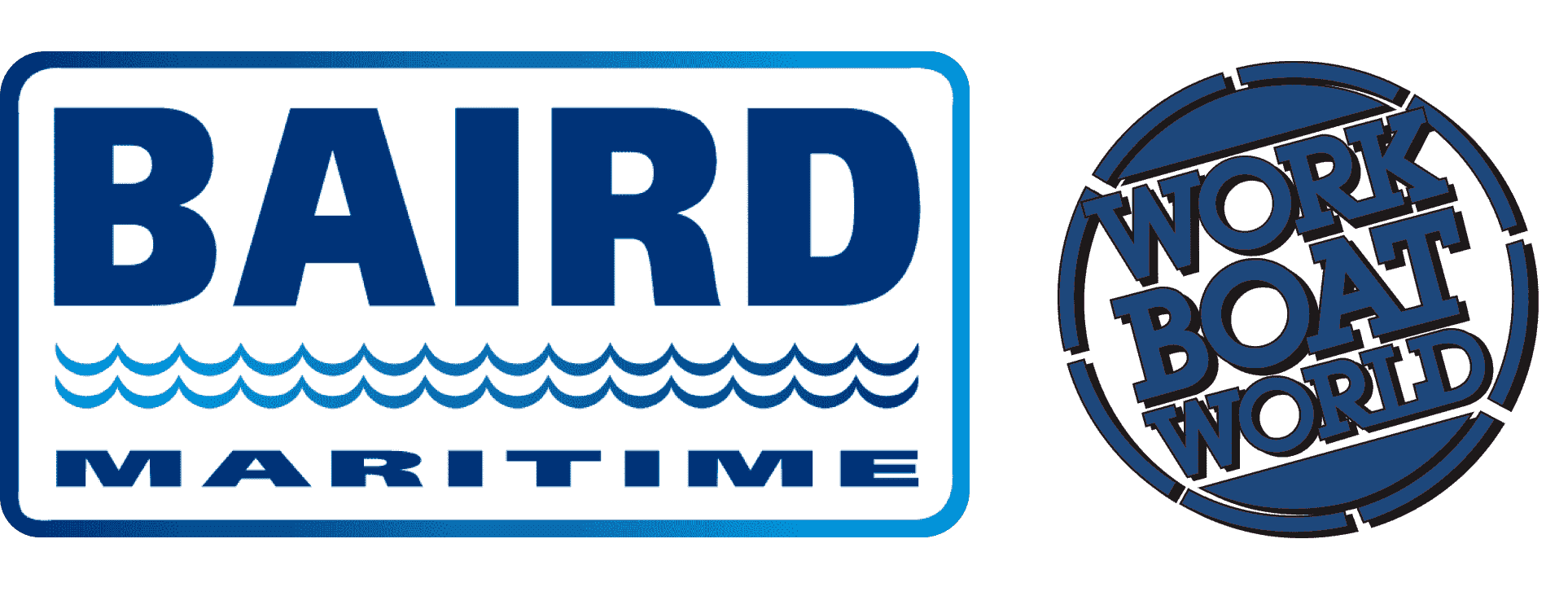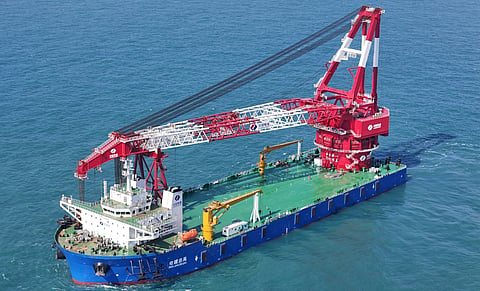VESSEL REVIEW | Dianjian Zhigao – PowerChina acquires harsh-environment crane vessel for wind turbine installation duties
Chinese shipbuilder Shanghai Zhenhua Heavy Industries (ZPMC) recently delivered a new crane vessel to local company Power Construction Corporation of China (PowerChina).
Dianjian Zhigao (電建志高; “Power Construction Zhigao”) features a streamlined hull design and an eight-point mooring positioning system that enables high-precision work in waters up to 100 metres (330 feet) deep.
Equipped with unrestricted navigation capabilities, the vessel was independently designed and engineered by ZPMC to be capable of installation and construction even under extreme conditions. The vessel itself was built to be capable of withstanding wave heights of 12 metres (39 feet).
The vessel has an LOA of 180 metres (590 feet), a beam of 49 metres (160 feet), a draught of 5.5 metres (18 feet), a depth of 15 metres (49 feet), and a main crane with maximum lifting capacities of 3,600 tonnes when fixed and 3,000 tonnes when fully rotating.
Versatile crane for turbine installation and general marine construction
The crane can lift loads up to 130 metres (430 feet) above the main deck and can install objects with significantly improved accuracy (with errors exceeding no more than 10 cm), making it ideal for installing 25MW offshore wind turbine foundations, including jacket structures, as well as offshore substations and large marine structures.
A DP1 system ensures accurate positioning even in rough seas.
Because installation can be undertaken within a broader weather safety window, construction of offshore wind farms will have a reduced risk of delays, thus ensuring projects can be completed sooner.
PowerChina added that the vessel can install an offshore wind turbine within two to three days, which is around 30 per cent faster than what was possible with earlier generations of crane vessels.
Advanced communication and monitoring features
The vessel features fully integrated digital and intelligent systems, a local area network (LAN), ship-to-shore communication, satellite TV and 4G signal amplification, as well as a unified gantry system, real-time vessel-shore data synchronisation, a fuel monitoring system, a dynamic vessel tracking system, and an equipment status assessment system.


